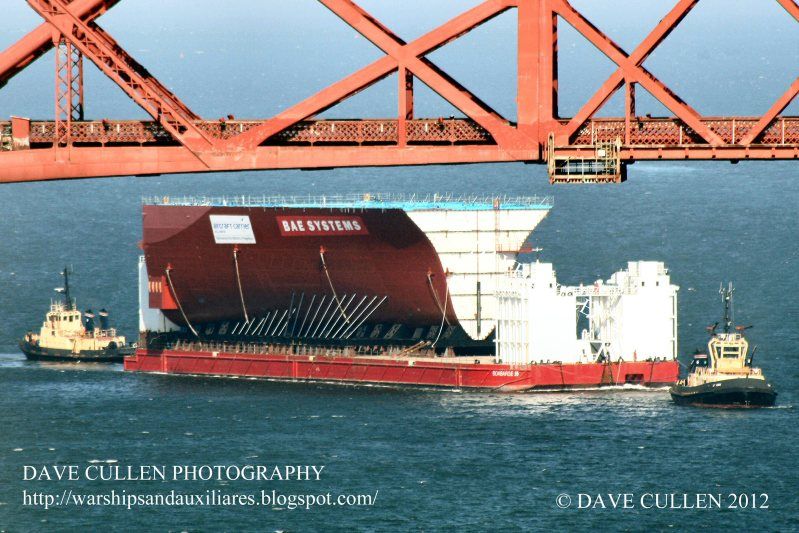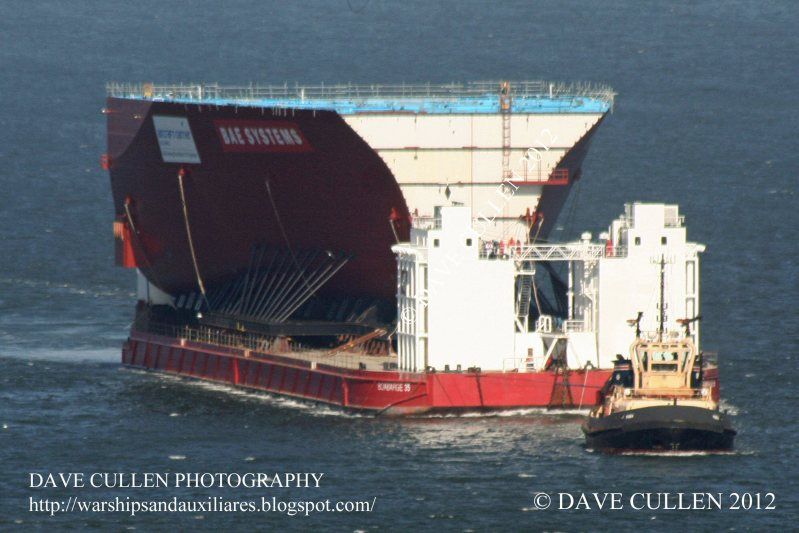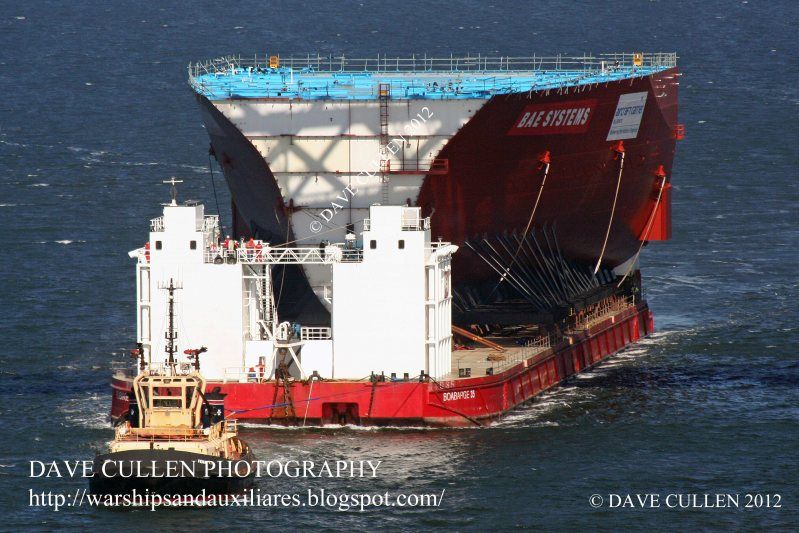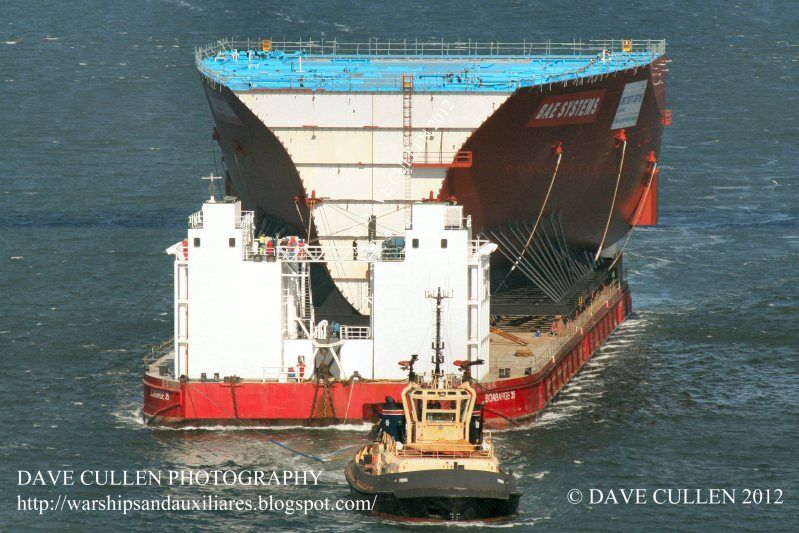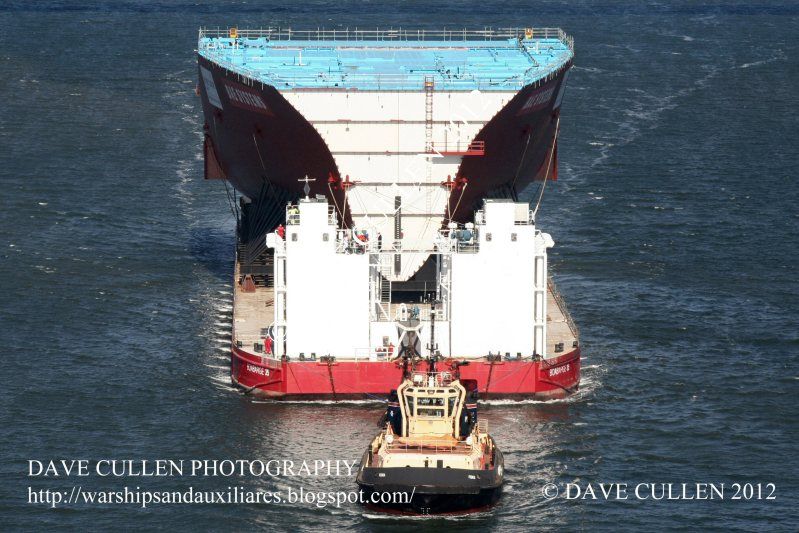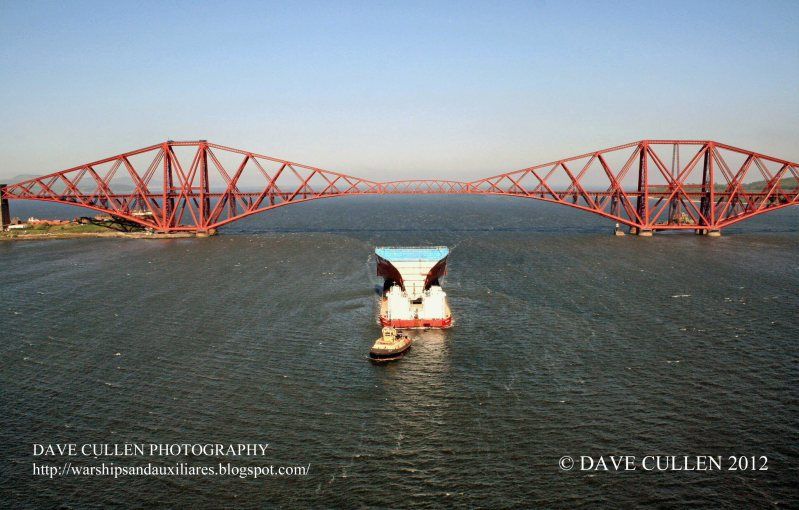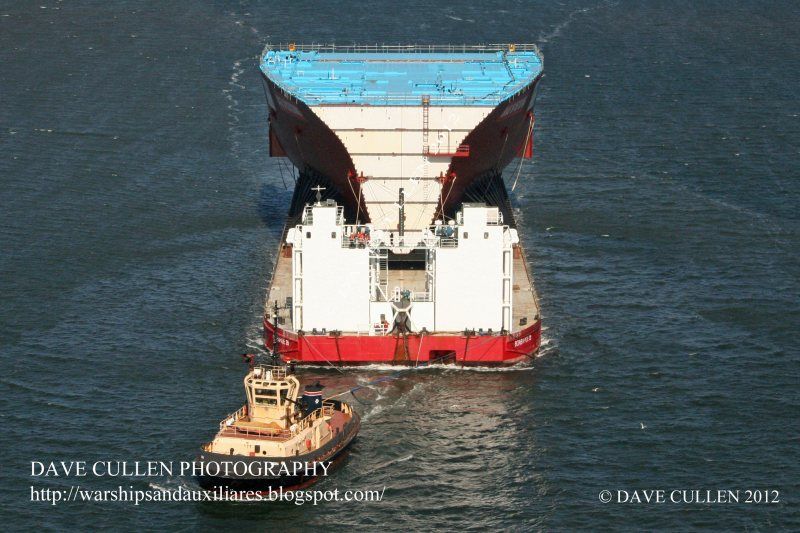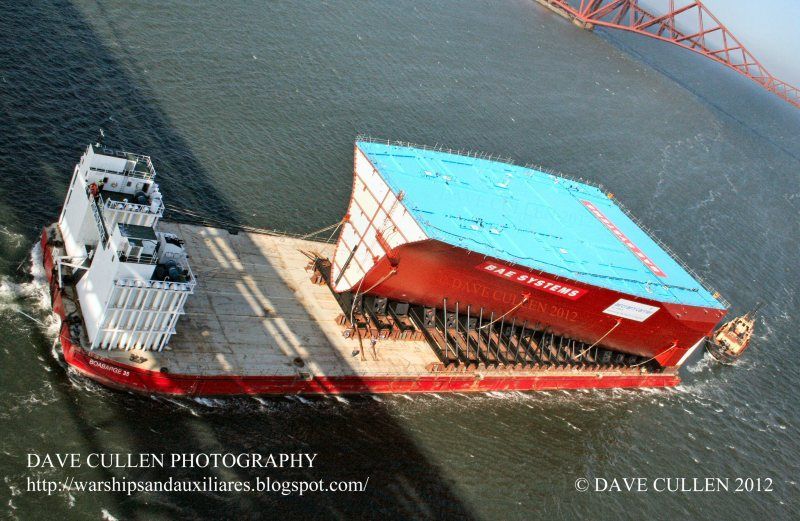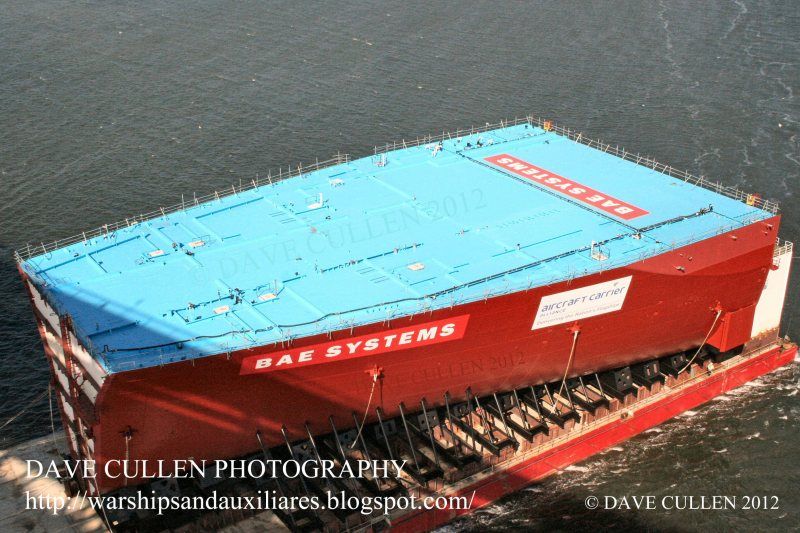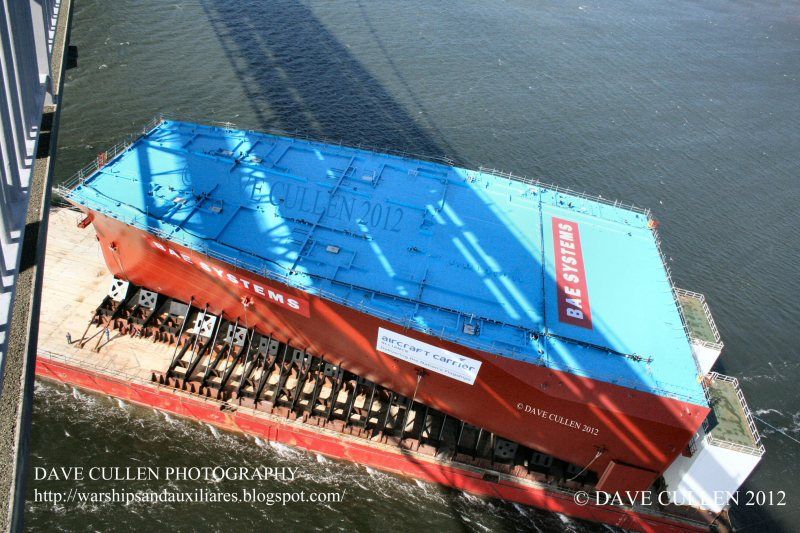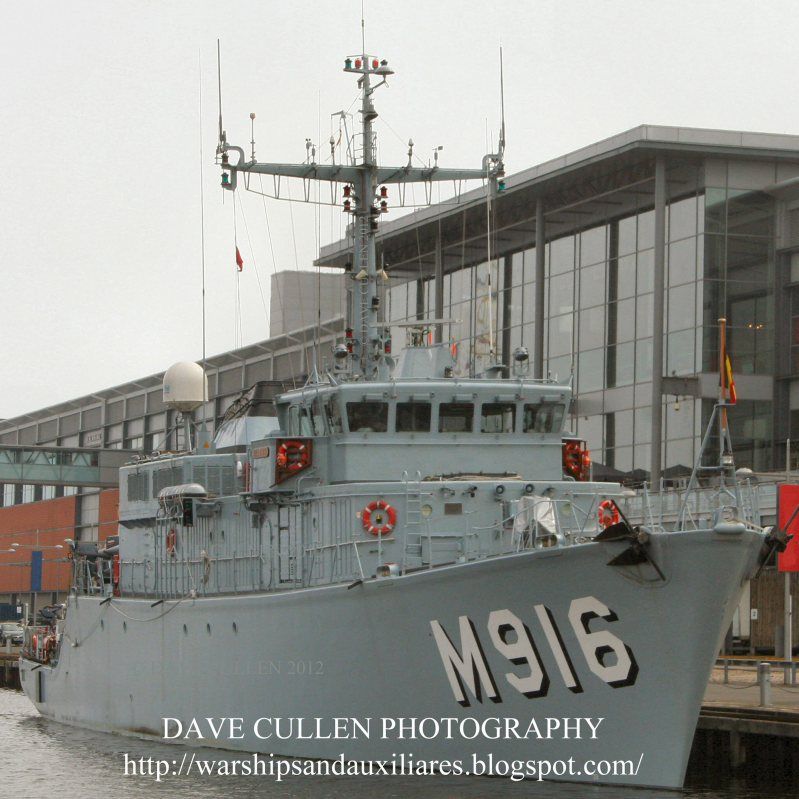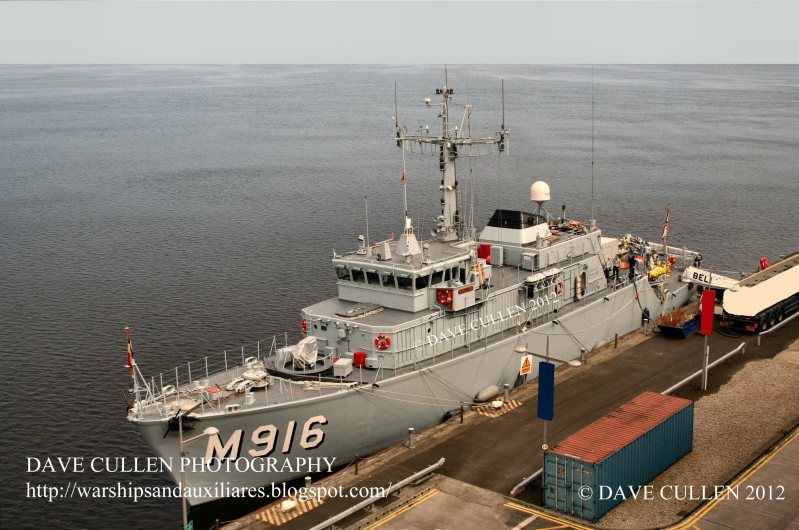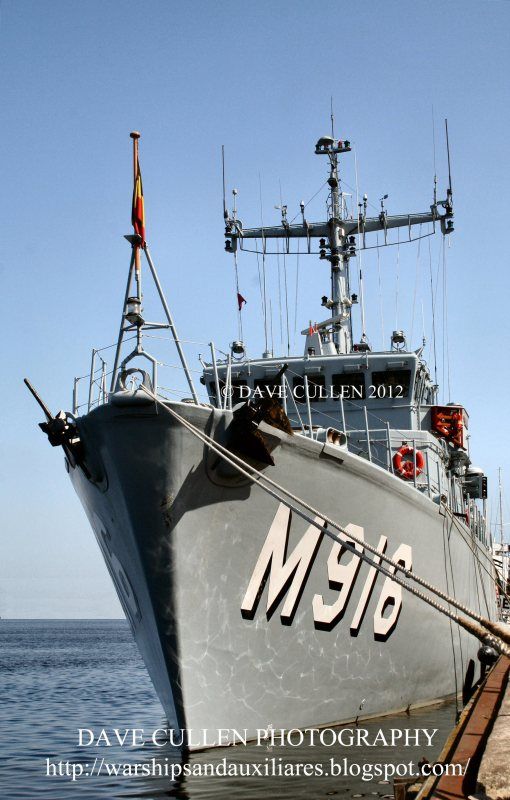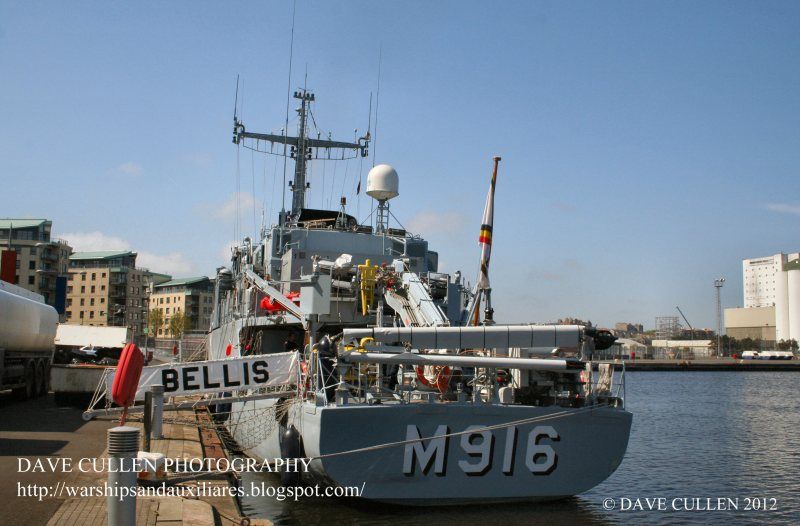Seen below is a 6,000 ton section
of aircraft carrier HMS Queen Elizabeth making stately progress under the Forth Bridges on Friday
May 25 en-route to Babcock's Rosyth Dockyard.
The block - known as Lower Block
02 or LB02 - left BAE Systems’ Portsmouth yard, where it has been under
construction for more than two years, on board a specialist sea-going barge
last.
It makes up part of the lower
section of the ship’s bow and stands over 20 meters high, 70 meters long and 40 meters wide.
LB02 is already fitted out to a
very high standard. It houses everything from machine rooms to accommodation
for some of the 650-strong crew.
The barge will sink and the block
will be floated off. Meanwhile the Rosyth dry dock will be flooded and the
13,000 tonne section already under construction there will be floated out. LB02
will then be moved in, and the other section will be moved in behind it.
Once both sections are in place
the dock will be drained and work to start integrating the sections will begin.
The aircraft carriers HMS Queen
Elizabeth and HMS Prince of Wales are being delivered by the Aircraft Carrier
Alliance, a unique partnering relationship between BAE Systems, Thales UK, Babcock and
the UK Ministry of Defence.
